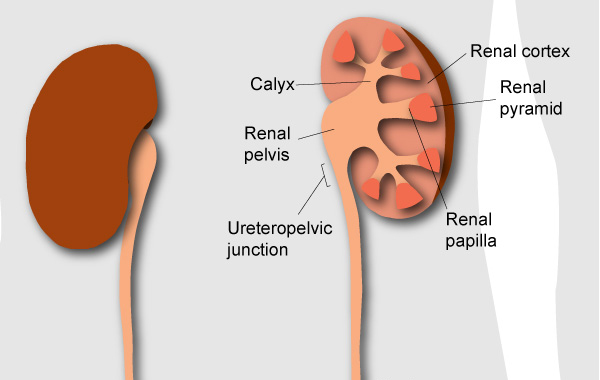Understanding the Urinary System

Most people have two kidneys, which are essential organs of the urinary system. Their primary functions include regulating fluid volume, maintaining electrolyte balance, and removing waste through blood filtration and urine production.
Within the urinary system, urine forms in tiny collecting tubules located in the renal pyramids. The urine exits kidney tissue through the renal papillae at the ends of hollow structures called calyces. These calyces join together to form a larger space known as the renal pelvis.
From the renal pelvis, urine moves into the ureters. The ureters are small, hollow tubes with smooth muscle that help propel urine toward the bladder. The junction between the renal pelvis and ureter is called the ureteropelvic junction.
The ureters enter the bladder at connections known as the ureterovesical junctions. The bladder is another key organ of the urinary system. It collects and stores urine until urination occurs. During urination, the bladder contracts and expels urine through the urethra.
Kidney stones most commonly form within the kidneys of the urinary system. They can also develop in the bladder or, less commonly, directly within the ureter.

